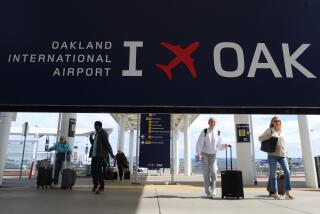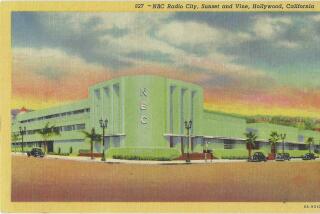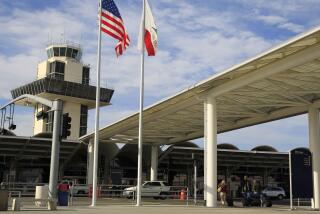Rhymes and Reasons for Airport Code Names
- Share via
Willmar, Minn., is ILL this week. And every week.
Jasper, Tenn., is APT. And Sioux City, Iowa? SUX.
For the record:
12:00 a.m. Oct. 31, 1999 For the Record
Los Angeles Times Sunday October 31, 1999 Home Edition Travel Part L Page 6 Travel Desk 1 inches; 32 words Type of Material: Correction
Airport codes--Due to a reporting error, a Travel Insider column (“Rhymes and Reasons for Airport Code Names,” Oct. 24), gave an incorrect three-letter identifier for Denver International Airport. The correct letters are DEN.
Or at least it says so on the luggage tags found in these places, and it says so in the ledger book at the Montreal, Canada-based International Air Transport Assn. The association acts as global clearinghouse for “location identifiers”--those three-letter airport code names found on your luggage tags--and its records show about 10,646 of them worldwide, beginning with AAA (Anaa, French Polynesia) and ending with ZZV (Zanesville, Ohio).
Some code names are more obvious than others. LAX seems reasonable enough as an acronym for Los Angeles International Airport. FAT may be mildly amusing, but still seems a sensible moniker for the Fresno Air Terminal.
But what strange logic yields YYZ for Toronto, EAT for Pangborn Field in Wenatchee, Wash., ORD for O’Hare in Chicago, or OGG for Kahului airport in Maui, Hawaii?
And with only three letters in these codes, aren’t we likely to run out of old-fashioned airport names soon, the way we have with old-fashioned phone numbers in big cities?
The answers to these questions are of no practical use to the leisure traveler. I’ve got ‘em anyway.
The International Air Transport Assn., founded in Havana, Cuba, in 1945, handles a wide range of jobs largely invisible to casual travelers. Operating from main offices in Geneva, Montreal and Singapore (with many smaller offices), it serves as keeper of the codes and acts as a clearinghouse for debt settlement between airlines (which, thanks to code-sharing and other cooperative marketing agreements, adds up to billions of dollars yearly). It coordinates Y2K upgrade efforts, accredits travel agents and lobbies for increases in air traffic capacity.
In the 54 years since IATA’s founding, reports the organization’s Internet site (https://www.iata.org), the international industry of scheduled flights has grown 100 times larger.
With three letters to each airport code name, the system has room for 17,576 airports worldwide. About 10,646 were taken as of mid-October, and another 33 were blocked for various reasons (including objectionable words), leaving 6,897 codes available. IATA estimates that 100 to 150 new location identifiers are assigned each year. (U.S. airport designations are worked out in cooperation with the Federal Aviation Administration.)
Thus, not every city can claim its favorite three letters. So it went with the aforementioned Sioux City Gateway Airport. Smithton, Australia, has SIO; San Cristobal, Venezuela, has SCI; and SUX was apparently what remained (although Sioux City officials at one point were said to be in negotiations over alternatives with IATA and the FAA).
The situation was similar when Northwest Arkansas Regional Airport, near Fayetteville, opened in fall 1998. None of the available options really matched well with Northwest Arkansas, so they settled for XNA. (The Navy has dibs on most codes beginning with N, which is why Nantucket is ACK, Newark is EWR and Norfolk is ORF.)
The most entertaining part of the IATA Web site may be the function that allows visitors to type in a city and learn its airport code, and vice versa. Exploring that way, you find that Canadian airport codes begin with Y, a choice made decades ago by Canada’s government aviation authorities. (Toronto: YYZ. Montreal’s Dorval airport: YUL. Vancouver: YVR. Ottawa: YOW.)
You find that Wittenoon, Australia, has WIT, that San Juan Aposento, Peru, is APE, that SIN can be found in Southeast Asia at Singapore’s Changi airport; that Funafiti Atoll, in the Pacific island nation of Tuvalu, is FUN; and that this world’s airports are without JOY and sans VIM.
And what of Wenatchee’s EAT, Chicago’s ORD and Maui’s OGG?
IATA’s archives lay it all out:
In earlier years of developing the system, federal officials held out the letters K and W for commercial radio stations. Hence, Wenatchee lost its first letter, as did Wilmington, N.C. (ILM) and Key West (EYW).
ORD arose because Chicago’s O’Hare airport (named for a World War II pilot from Illinois) was built on a site previously known as Old Orchard Field.
OGG endures as a tribute to longtime Hawaiian Airlines chief pilot Jimmy Hogg (which rhymes with brogue), who helped develop navigational aids for the airport at Kahului.
Then there’s Orlando, Fla.’s international airport--MCO, because the site once held McCoy Air Force Base. Nashville’s airport was named Berry Field until 1961; hence BNA. In New York, perhaps the most famous airport code in the world, JFK, dates to 1963, when the airport was renamed for slain president John F. Kennedy. Before that, the name was Idlewild airport, and the identifier was IDL.
DIA, now Denver International Airport, in the early 1960s stood for Dulles International Airport, serving Washington, D.C. But aviation officials found that baggage was often accidentally swapped between Dulles (DIA) and nearby National Airport (DCA). As a result, the Dulles identifier was switched to IAD, and the FAA added a rule that airports within 200 nautical miles of each other shouldn’t have similar identifiers.
By the way, some good news here for the Chamber of Commerce out in Zzyzx, in California’s Mojave Desert: When the day comes that you build your own airport, ZZY and ZZX are both still open.
Christopher Reynolds welcomes comments and suggestions, but cannot respond individually to letters and calls. Write Travel Insider, Los Angeles Times, Times Mirror Square, Los Angeles 90053, or send e-mail to [email protected].
More to Read
Sign up for The Wild
We’ll help you find the best places to hike, bike and run, as well as the perfect silent spots for meditation and yoga.
You may occasionally receive promotional content from the Los Angeles Times.







